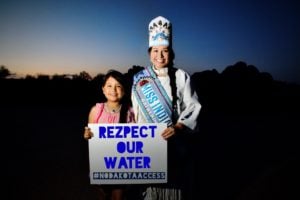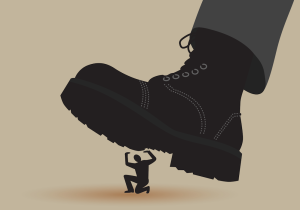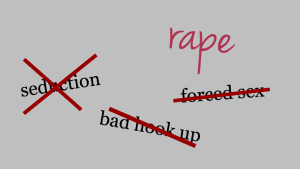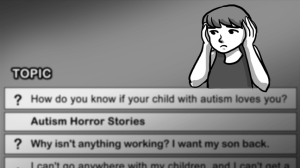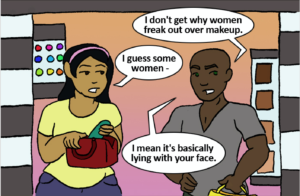“Go home.”
There are myriad social, cultural, and political ways that Asian Americans are reminded that they don’t really belong in the US.
For Asian Americans, we’ve both hoped for and lamented the US as both a site of liberation and of oppression – simultaneously.
We, also, constantly negotiate our many different experiences of power and privilege.
Asian Americans have a long, ongoing history of struggle in order to belong politically and culturally in the US. Yet, sometimes, those struggles have also come at the expense of those within our communities and, also, other communities we don’t belong to.
We must move away from politics that cry out “me first.”
Many of us have a complicated relationship with this country. For those of us who have class privilege, and hold the privilege of US citizenship, and call the US home, we must find new ways to continue fighting for freedom and justice for ourselves and each other.
And we have to do this in ways that don’t only rely on “American-ness” and “America.”
In Trump’s inaugural address, he said, “From this day forward, it’s going to be only America first, America first.”
To Trump and his followers, “America first’” means building a wall at the US-Mexico border. It means banning Muslims from entering the US.
Putting “America first” means repealing DACA and other policies that protect undocumented immigrants from deportation. It means increasing American militarization at home and abroad, expanding stop-and-frisk policies, and continuing construction of the Dakota Access pipeline.
The concept of “America first” comes at the expense of Black and Brown people, queer folks, disabled people, immigrants, poor and working class people, rural communities, and—well—basically everyone unless you’re part of (or represent the interests of) a white, wealthy elite.
The “America first” mentality will continue to expand the US empire while, simultaneously, patrolling and enclosing our own borders.
While “America first” is not a completely new sentiment, the implications of the current administration makes it urgent for East Asian Americans to rethink what our “American-ness” means.
Our critique of “American-ness” presents possibilities and illuminates obstacles in dismantling white supremacy. Through our ability to rethink and critique, we can consider the linkages between anti-Black racism, settler colonialism, and xenophobia.
Yes, we rely on the state to ensure particular material conditions.
But if we start letting go of the idea that those are the only possibilities towards freedom, perhaps, then we can imagine new pathways to freedom that binds us to the movements for Black lives, Native sovereignty, and immigrant rights.
We must focus our attention on the very specific ways US policies have shaped political and economic structures that have enabled some Asian American communities to thrive.
Transnational feminism has offered one way for us to think about how our own lived experiences in the United States connects to the experiences of others around the world.
In approaching transnational feminism from a decolonial perspective, we must be willing to be more vulnerable and ask ourselves questions about our multiple complicities in different structures of power.
We must ask: What is really at stake when we align ourselves with the US as a state power?
As Eve Tuck and K. Wayne Young write, decolonization is not a metaphor. In what ways do we benefit from Native land and resource dispossession?
How our own own political and economic opportunities limited, yet also enabled by settler colonization and US imperialism?
With this in mind, we must ask, what then does American-ness mean for us as East Asian Americans?
While there’s not one specific answer to that question, below are several points of reflection that I’m working through.
1. Compromised ‘Citizenship’ That Relies on Continued Oppression
From Yellow Peril to Islamophobia, xenophobic specters of “dangerous hordes” from Asia loom in US discussions around who is considered a “good” (or good enough) citizen.
The dual racialization of some Asians as “model minorities” and “perpetual foreigners” simultaneously allow for our exclusion and assimilation in the US.
Immigration policies select certain people for inclusion and exclusion.
For example, the 1965 Immigration Act allowed Asians of a certain educational and class background to migrate to the US. After 1965, low-wage and perceived low-skill labor immigration stalled, making room for “high-skilled,” higher class professionals to enter the US.
Under Trump’s administration, citizenship – as defined by the state – will become more unstable with policies focused on increasing deportation and detention while simultaneously decreasing green cards and visas.
Often, our freedom as dependent on the US nation-state is dependent on perceptions of our Asian-ness as “good” or “bad.” The Trump administration circulates ideas about the “right” kind of citizen.
For Asian Americans, moral dichotomies of good versus bad – good/bad immigrant, model minority/perpetual foreigner, can be mapped along our particular usefulness to the federal administration at a given historical moment.
White elites offered us a promise – that if we behaved and assimilated as “not Black,” then maybe some of us could inch closer to the so-called American Dream. Of course, the American Dream is only available until you become a threat – then we can be spied on and detained.
In the US, popular media narratives create a national imagery of “good” Asians as those that hold professional positions like doctors, engineers, or business managers.
Yet, the “good” Asian that follows the rules and assimilates as a “good, quiet, model citizen” also contradicts ideologies around American individualism.
While we might be valued as good for the economy, we’re never seen as real Americans.
As Ellen Wu has written, the model minority myth was also a specific strategy by some Asian American communities – to be accepted and recognized as human beings during a time when their access to resources was restricted by law.
They attempted to prove they were worthy of citizenship – that they were “good” immigrants.
These strategies for survival were then popularized by white politicians that used the “hard-working” Asian as a convenient tool to:
- Promote the country’s democratic and anti-racist image; and
- Maintain the racial hierarchy that casts Black Americans as a “problem minority,” riddled with crime and poverty
The story of Asian American success went hand-in-hand with media narratives of so-called Black failure.
In this way, the US government could dismantle social welfare programs and deny future initiatives towards racial justice under the guise of racial equality.
Our citizenship status is often leveraged against other immigrants, Native people, and Black people. Our position in US society has often relied on enforcing boundaries along race and class.
While the material benefits of citizenship are important to wellbeing, do we want it in a way that coerces and forces assimilation, not just of ourselves, but of our other communities?
While assimilation may be a strategy of survival for some, for Native communities, assimilation has meant cultural genocide.
We must refuse to be used as pawns in White America’s war against Black and Indigenous communities.
2. Rethinking Our Categories of Belonging
I went to college in mid-Missouri and during my time as an undergraduate, “Asian American” was my most salient identity.
I was in the Asian American Association and one of the first major programs I remember participating in was a week-long series of events framed along the theme of visibility.
Yet, visibility is a double-edged sword.
For example, for some who also identify as Asian Americans, being visible may suggest increased surveillance by the state.
While Asian American, as a category, has been a politically strategic unifying term, we must pay attention to the multiple histories and experiences across our many communities.
As we grapple with our positionality in different communities, language plays a considerable role so we don’t end up co-opting and appropriating other struggles.
Now, as I incorporate and claim woman of color as a category of belonging, I can’t confuse my own experiences of racial violence as being equivalent across all communities of color.
Again, while “people of color” and “woman of color” strategically offer unity against white supremacy, we can’t conflate experiences under one umbrella.
Also, using labels, such as AAPI (Asian American Pacific Islander) or APIA (Asian Pacific Islander Americans) may seem like it offers more inclusive language, yet the experiences and material needs of Pacific Islanders are often ignored and erased.
If Asian American is going to be our call to community, then we must center those in our communities who experience the most vulnerability under current regimes of the state.
This includes Indigenous and Black Asians, queer and trans folks, and low-income Asian groups.
For non-Black and non-Indigenous Asian people, we have to acknowledge that our own experiences of racism and of oppression are different from anti-Black racism and Indigenous disenfranchisement.
Additionally, as Mark Tseng Putterman writes, often pushing against our own invisibility shifts attention away from demands for material justice by Black and Indigenous communities.
These demands for attention fall into an oppositional trap where we perceive the visibility of other communities of color as eclipsing our issues, rather than attempting to relate to them.
3. Reflecting on the Land We’re On, the Land We’re From, and Other Lands in Between
I’ve been trying to pursue politics that are both more intergenerational and transnational, such as reaching out to my family as an intimate form of activism.
As a child of Taiwanese immigrants who support Taiwanese independence, I feel emotionally and politically attached to Taiwan – even though I’ve only spent summers and short trips there.
And though I’m not Chinese, I’m disgusted by Trump’s xenophobic accusations of China as robbing the US (and doing so by using the metaphor of sexual assault).
As Asian Americans, how do we navigate our desires and yearnings to connect to ideas of home – either overseas or our current homes that occupy Indigenous land?
My parents own a house in the suburbs. In many ways, America works for us.
My parents can now easily navigate different institutional structures – like the DMV to replace identification or the bank to get a mortgage. And when they do, white employees express how impressed they are with their mastery of English.
Or my parents spend half of the year apart, because my mom can’t find work writing and teaching in the US because her accent is too broken – so she pursues her career in Taiwan.
Is such a compromise worth it?
In addition, is it worth ignoring the reality of others for the sake of guarding our own wealth and resources?
We can begin grappling with our past as a way towards the future. We can reconcile that our presence and citizenship comes out of colonial and racist institutions and histories.
We must get to know what land (and whose land) we are on and our own family history of how you got here. This includes knowing the policies that have made it possible or impossible for some members of families to migrate.
Our exclusion operates alongside the elimination of Native people as the US exerts power over people of color and Indigenous communities as a way to maintain control over land and labor.
Immigration policies work to exclude citizenship, voting, and property ownership. Additionally, US interventions abroad helped create a global market that relies on an exploitative migrant labor system.
Part of understanding these histories allows us to better connect anti-Black racism and settler colonialism to our communities.
Also, it helps us become more aware of our families’ struggles and investments in the US and abroad.
4. Practicing Accountability at Home and Fighting in Solidarity
In locating the interconnectedness of local, national, and global struggles, we have a role in fighting against Trump’s administration and larger social justice struggles.
As we look to confronting what it means to live on stolen land, one way for us to be accountable is to work with with Native-led movements on their terms and upholding Native cultures, beliefs, and values.
For example, we can work to decolonize the environment through sustained efforts to be in solidarity with the water protectors at Standing Rock.
After Trump’s executive order, drilling has begun underneath the Missouri River and directly underneath Indigenous burial grounds.
As we re-envision our place and contributions in social justice movements, we must be open to rejecting the settler state as our site of liberation, while centering Black liberation and Indigenous futurity.
xoài phạm’s piece reminds us that, for different members across Asian American communities, the structures that harm us – militarization, surveillance, the prison-industrial complex, policing, immigration detainment and deportation – harm Black folks the most.
This means that we benefit from Black liberation movements. It also means that we must fight alongside Black activists and organizers.
Or, as Sasha W. puts it, “while our experiences of state violence aren’t the same, they’re connected” – necessitating a practice of selfish solidarity (not self-centered).
In organizing for the survival of Black and Indigenous lives, we organize for our own survival, too.
***
For many Asian Americans, the future seems uncertain.
Even so, we must take up the challenge to become specifically accountable to Native people and Black people (who are also part of our communities!).
White supremacy and settler colonialism have done centuries of work attempting to make it harder for our communities to come together and fight back.
We must consider letting go of our futures as only tied to the US and as tied to so-called freedoms granted by US sovereignty.
We must question or commitment to accessing property and wealth on land that isn’t ours and has never been ours.
We have a lot of uncomfortable, messy work to do and more difficult questions to ask.
[do_widget id=’text-101′]
Rachel Kuo is a Contributing Writer for Everyday Feminism and a scholar and educator based in New York City. Her professional background is in designing curriculum and also communications strategy for social justice education initiatives. You can follow her on Twitter @rachelkuo. Read her articles here.
Search our 3000+ articles!
Read our articles about:
Our online racial justice training
Used by hundreds of universities, non-profits, and businesses.
Click to learn more
Most Read Articles
- « Previous
- 1
- …
- 30
- 31
- 32







